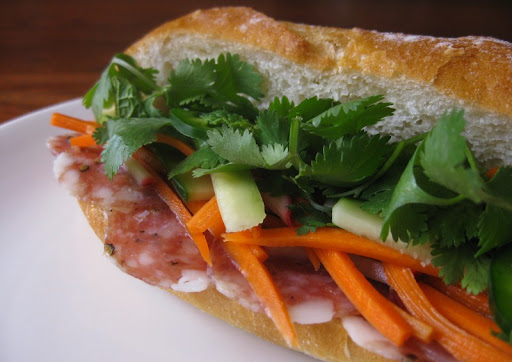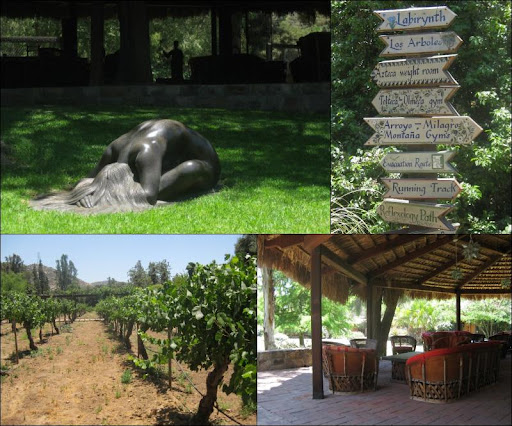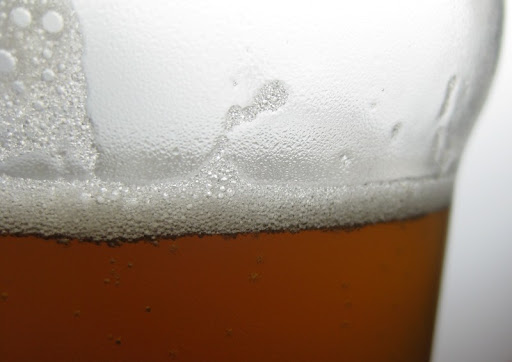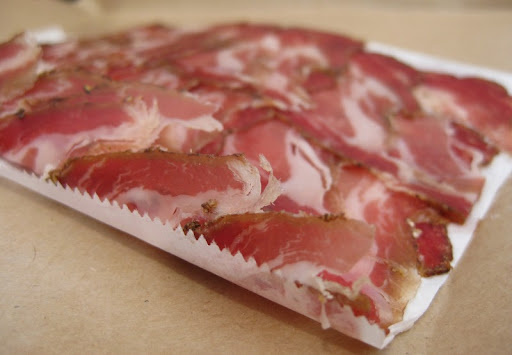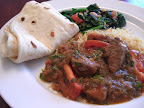Tuscan Salami and Our New Meat / Cheese Slicer

Just because we haven't said anything for a while about our magic meat and cheese curing fridge, that doesn't mean there hasn't been anything going on. Quite the contrary, in fact.
Case in point: our latest foray into the world of dry-cured sausages - Tuscan Salami.
After having great success with Saucisson Sec, which is about the most basic cured sausage you can make, we decided to up the ante and do a fermented, cured sausage. Tuscan Salami seemed like a very good place to start. Like Saucisson Sec, it is made from simply seasoned pork - in this case with garlic, a touch of fennel and a bit of red wine (the recipe we used was from Charcuterie).
Tuscan Salami is a larger beast than we've made before, and thus called for a larger casing. We used narrow beef middles. This should give you a picture of the initial size:

As I mentioned earlier, this is a fermented sausage. Fermentation adds that characteristic twangy bite that is prototypical of what I, as an American, think of as a "salami".
The fermentation process starts by mixing sugars (dextrose and dry milk powder, which adds lactose) into the sausage meat base and then adding in a small amount of a beneficial live culture: Bactoferm F-RM-52. As counter-intuitive as it may seem, the resulting raw, stuffed sausages then rest for 12 hours at about 85ºF while the culture (the good bugs) eat the sugars and produce lactic acid. If all goes well, the pH decreases enough to turn the raw meat mixture into a decidedly unattractive place for any bad bugs out there (and adds that nice, tangy flavor as well - a very pleasant side effect). Afterward, the freshly fermented sausage doesn't really look any different, but it has most definitely changed.
Next up is the drying time in the magic fridge. A mere four weeks later, it emerged looking like this:

Fermentation is not the only new trick in our cured meat arsenal, however. We decided that we needed a slicer to do justice to the gems that our magic fridge has been turning out. After scouring Amazon reviews it was pretty easy to decided on the Chef's Choice 610 Premium Electric Food Slicer from EdgeCraft. Unless you are willing to spending the $500-$1000 it takes to get a commercial quality slicer, at $100 the Chef's Choice 610 seemed like the clear best bet. As one reviewer put it, "this is not a commercial machine but it thinks it is".
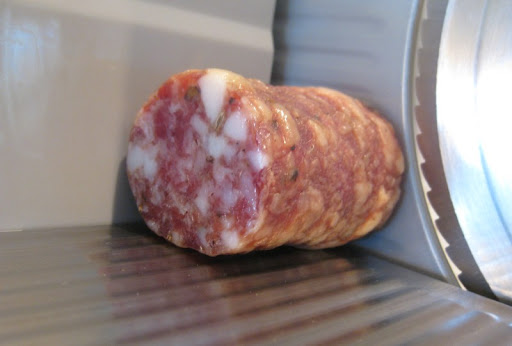
So far, we've been extremely happy with it. It easily slices super-thin slices of salami (and cheese).
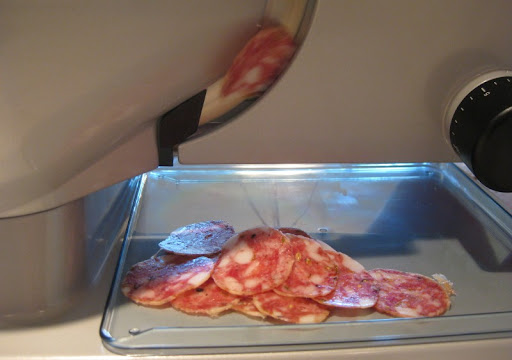
The result of our foray into the world of fermented, dry-cured sausages and the acquisition of new slicing apparatus have both paid off handsomely:
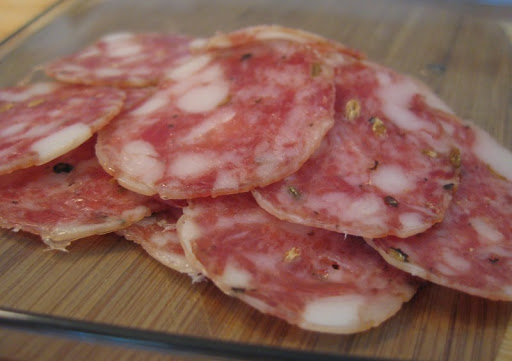
Definitely the nicest cured sausage we've made so far (which is good, since we made a lot of it!). The thin slices our new slicer provides taste noticeably better than hand-cut. The skinnier slices are all surface area and make for rich, meaty, aromatic morsels.
We've been eating a lot of the salami straight up with crackers and maybe a bit of cheese, but it has been fun to use in other contexts as well. We did a nice grilled pizza with it the other day and, given our current "have meat, must make banh mi" mindset, this was inevitable:
